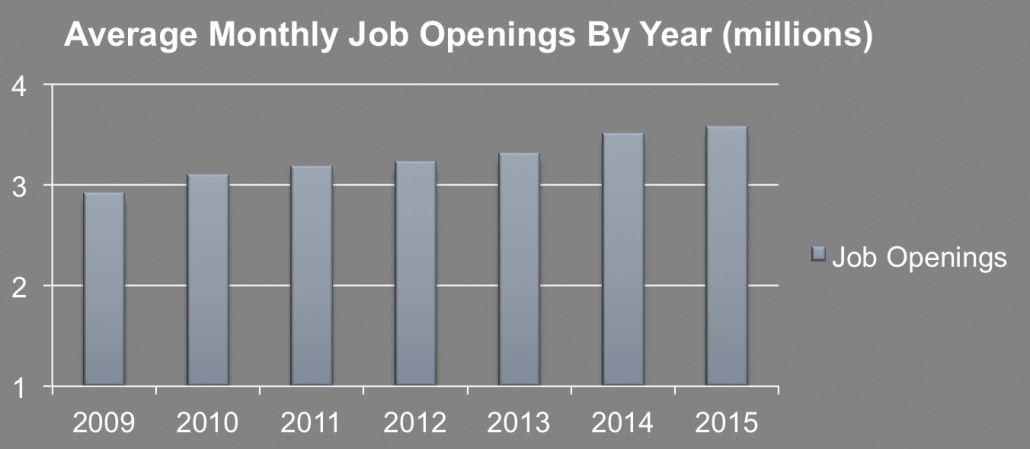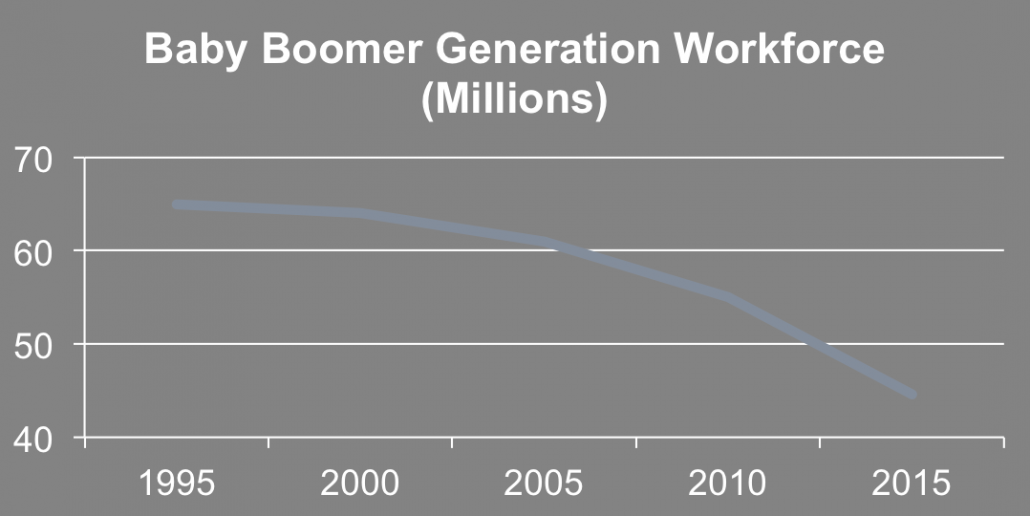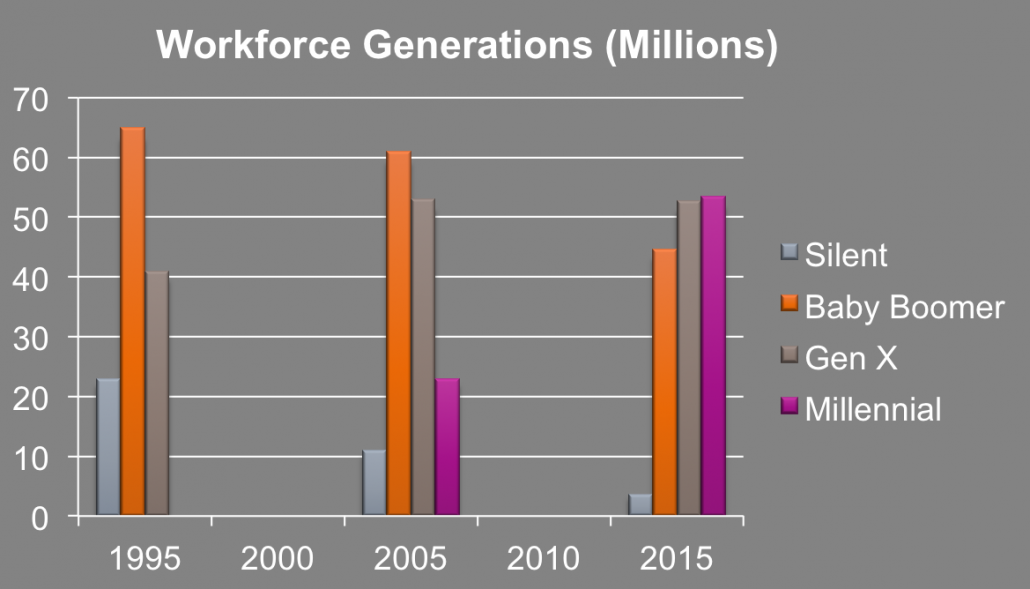New Leadership Must Inspire New Talent
The following blog post is part 3 of a 3-part series, which is adapted from a speech given by Harlan Schafir (CVO, CEO of ExactHire and Human Capital Concepts) at the Collective Alternative Executive Speaker Series on September 17, 2015.
In my previous two posts from this series, I discussed how changing demographics, views on the nature of work and the workplace, and rapid advances in technology have converged to create intense competition for talent in today’s job market. I believe that this has resulted in making talent management the #1 constraint to a business’s growth. As a solution, I’ve proposed that organizations seek to adapt their work culture to attract, hire, and retain top talent. Today, I would like to discuss how leaders of an organization can do the same by adapting their leadership style.
Style, Not Substance
It’s easy for business leaders to become defensive when we begin to talk about “adapting leadership style”. I can imagine the response to such a proposition would be something like: “But my leadership style has been successful to this point!” or possibly, “I didn’t dictate the style of the leaders who led me! I fell in line and paid my dues.” or even, “ These whiny, spoiled millennials want everything their way.”
However, when we talk about “adapting” leadership style, it’s important to understand that this refers to changing the delivery of your values or principles, not changing your values and principles themselves. In other words, if you are a leader who values trust and accountability, then the change is in how you engage employees in imbuing those values through their work; trust and accountability do not need to be discarded simply because it appears that the two values are threatened by a shift in workplace culture like, say…an employee’s need for telecommuting or flexible work arrangements.
So the question before leaders today is: How do I effectively communicate my values and principles to a new generation of employees in a way that inspires their loyalty and motivates their work?
Leading a Multigenerational Workforce
Much has been written, spoken, and thought about the Millennial Generation. These blogs, tweets, posts, podcasts, ebooks, etc. have gone to great lengths–some based on dubious sources and research–in describing how DIFFERENT this group is from those generations before it.
So much has been written, in fact, that one might believe that “leading millennials” is the most pressing and important challenge before business leaders today. But I believe it’s much bigger than that. It’s about leading a diverse workforce that, for at least a little bit longer, will span 4 generations.
And while 4 generations working side-by-side is unprecedented, the concept of leadership evolving in response to generational shifts in the workforce is hardly anything new.
Leadership Styles Over The Years
Dr. Tim Elmore–a noted author, thought leader, and speaker on Leadership Development–speaks of the different styles of leadership over the past half century as being products of the time–and specifically products of each period’s emerging generation.
50’s – 60’s (The Military Commander)
Organizations were run from top-down. Authority was not questioned. If someone left a staff position, they were considered disloyal. These leaders led from positional authority.
70’s (The CEO)
This leader led by creating a vision that would influence followers to buy-in and work toward fulfilling the leader’s vision. Productivity was the focus. The style was still very top-down.
80’s (The Entrepreneur)
This leader was pioneering and often preferred the unconventional. They managed by “walking around.” They felt the most critical element was being the first to do it. Innovation was the focus. This style allowed for employees to share ideas that could be implemented, which helped them tolerate the fact that the leadership style was still top-down.
90’s (The Coach)
This leader assembled and worked with teams. They saw themselves as coaches of players. The leader found the proper roles for all the players, so that together–as a team–they could accomplish more than the sum of its individuals. This style was participatory, but still top-down.
(Today) Poet Gardener
This leader is discerning of the culture and ideas that emerge from others. They gather thoughts from others and draw connections in order to make the best decisions–even if the ideas are not their own. They see their primary function as developing their people, and they equip and empower employees accordingly. These leaders value individual and organizational growth, but see the the latter being driven by the former. This is leading with shared ownership.
Adapting Leadership Style
The fact that we can map the evolution of leadership styles and their differences is evidence that the challenge before business leaders today–to adapt their style to a new generation of workers–is not new; however, what could be considered unique is that meeting this challenge today will directly impact the constraint to an organization’s growth.
In other words, whereas previous changes in leadership styles evolved in order to increase efficiency or production indirectly through the employee, now this evolution in leadership is required in order simply hire and keep an employee. It has a direct impact on an organization’s ability to grow.
The mindset of “Here’s my leadership style. Here’s my culture. Accept it.” will not cut it. For businesses today, leadership style and culture may be more important than ever before. In order to grow, we must adapt to the new realities of a changing workforce.
Becoming A “Poet Gardener”
So how do we begin transforming our leadership style to one that engages and inspires a new generation of workers, while still serving to encourage and affirm preceding generations? Oh, and still results in the overall growth and increased profitability of our company.
I think it begins with listening. Until we are able to understand the needs and values of our employees and those that are prevalent and unique within each generation, we cannot effectively lead and inspire. I would like to provide a quick story of how I realized this.
Before starting ExactHire, I had spent over 25 years leading employees–mostly Baby Boomers. But it was with ExactHire–around 2012–that I began encountering a different type of worker: the millennial. What I noticed most in these workers was the change in expectations. And so, rather than forcing my leadership style–honed through managing Baby Boomers and Gen X’ers–I stopped and listened. And then I began to understand the expectations of this new generation of employees and how I could meet them.
The point here is that employee expectations change. Sometimes this is due to generational shifts in the workforce, sometimes it’s because of popular culture or societal shifts that span generations. But inevitably, employee expectations will change. Your approach to meeting these expectations as they change will define your leadership style and, ultimately, determine whether you retain top talent.
And this is important not just in addressing a seeming crisis–like a massive generational shift in the workforce–but also in building the type of organization that, thanks to its leadership culture, is “self-sustainable” and can adapt to future change–long after you’ve gone.
Feature Image Credit: Change ![]() by F Delventhal(contact)
by F Delventhal(contact)






